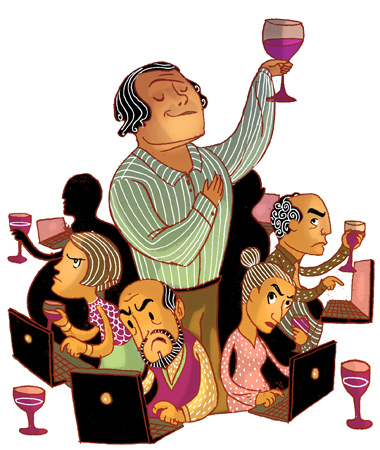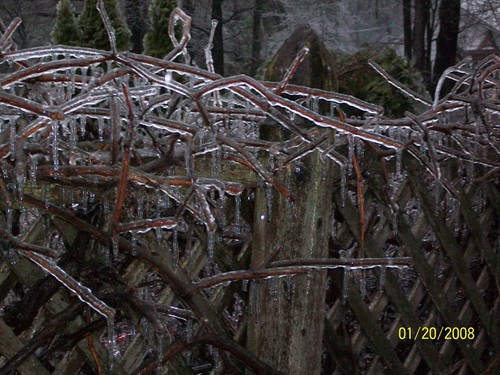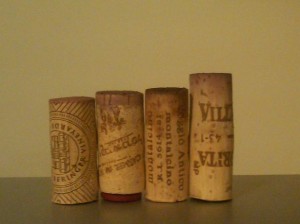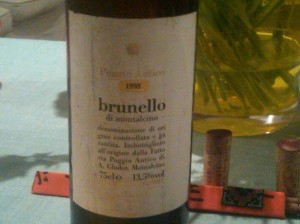When is it worth spending more than $30 for a bottle of wine? I would contend NEVER. OK, maybe not never, but for 90+% of purchases I think it is silly.

Let me begin by saying that I am referring to wines bought at a wine shop, not in a restaurant. Restaurants generally charge more, so that magic number probably goes up to about $40-50.
I have read several articles of late noting the decrease in sales of “premium” wines ($30+) that has resulted as the economy has struggled. Some speculate that as the economy recovers people will go back to buying these wines while others believe that consumers have found wines they like at lower price points and will not go back to paying more for a bottle. But more importantly, SHOULD PEOPLE EVER spend $30+ on a bottle of wine?
To answer this question we must first discuss some of the factors that make a wine so expensive.
The most important component of wine is the grape. To make a premium wine one must use the best grapes. These premium grapes come from the best vineyards in the best wine producing regions. When not used by the growers themselves, these grapes can cost upward of several thousand dollars per ton. The high price for these grapes leads to a more expensive wine. (This doesn’t even account for the cost of the land or the vines which often require 3-4 years before they reach maturity.)
The winemaker, though a debatable topic (for another time) is also an expense. Those winemakers who have proven the ability to make premium wines command premium salaries. Some of the best are actually contracted to be consulting winemakers and work with the full time winemaker to make the best wine possible. This adds to the cost of the wine.
Finally, and the factor I believe plays the biggest role in this debate is the aging process – which further breaks down to time and device. How long the wine is aged and in what vessel. Every day wines might be aged in stainless steel tanks that can be reused year after year & kept there for only a few weeks or months before being bottled and sold. On the other end of the spectrum are the wines that are aged in the finest oak barrels for as many as 24 or more months. The cost of these barrels can exceed $1,000 & are they only fully effective in their first use – though they are often used for 3, 4 or more different wines. That is 2 years of holding on to a product aged in $1,000 oak barrels before it can be sold – though it is often held for at least another 2-3 months after the wine is bottled.
SO, as you can see, these premium wines can cost their producer a lot of money to produce.
Then Wine Tasting Guy, you ask, I want the best wine there is and I am prepared to pay for it.
If your purchase is made for ego purposes stop reading now. You are doing what you want and there is no logic I can provide that will (or should) change your mind. But if you are really curious about whether or not your expensive purchase is worth it or not, read on…
In my (humble) opinion, these wines are similar to, if not LESS DESIRABLE than wines that undergo a cheaper aging process. Huh? If it is cheaper how can it be BETTER? Well, 90+% of wines (I think the number is closer to 95%) are consumed within 48 hours of being purchased. Therein lies my argument. So many of these premium wines are being consumed THAT NIGHT…but they are made to be consumed in 3, 5 even 10 or more years.
Premium wine aged in fine oak barrels need time to reach their full potential. A well made wine gains complexities as it ages. And the barrel aging process leads to wine that tastes oaky and often “tight” in its youth (think of cold food that should be served hot). HOWEVER, once these premium wines are given time (known as bottle aging) for the oak flavors/aromas to integrate well with the fruit component of the wine & are further allowed to develop secondary characteristics, these wines can be magical.
On the other hand, wines intended for early consumption, within about 3 years of the vintage date, generally have less new oak used and can reach their full potential much sooner. So while some may argue that the potential of these wines does not hold a candle to that of the premium wines, at least they are being enjoyed closer (or at) their full potential rather than way before their potential has come close to being realized.
SO, if you are a wine collector who intends to age your wine (in the proper place, temperature, humidity, etc) then go for it. Buy expensive wine…and invite me over to enjoy it with you ;). You are likely to be rewarded! But if you are like the other 95% of the population who consume wine within 1-2 days of buying the wine (or even within 6-12 months) then save your hard earned money and buy a wine in the magical $15-25 range.
Happy economically sound wine tasting!
WTG













